This week an unassuming Ecuadorian hacienda became a site of archaeological interest. Workers accidentally discovered a mound containing multiple Pre-Hispanic ceramic funerary urns while using heavy machinery to remove soil on private property in the province of Los Ríos.
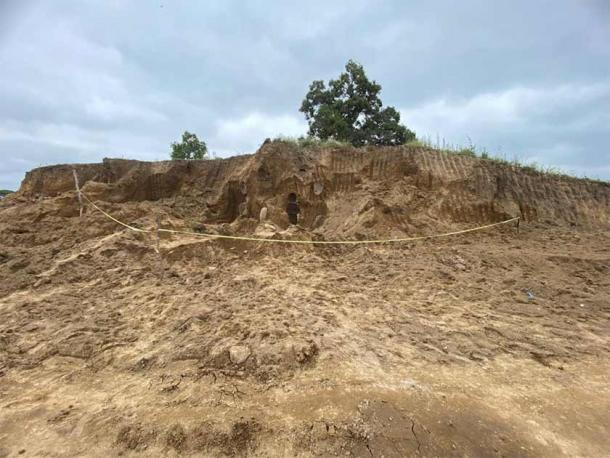
The funerary mound discovered at the hacienda in Antonio Sotomayor, canton Vinces, Los Ríos, Ecuador. ( Instituto Nacional de Patrimonio Cultural )
According to ALDIA, a local newspaper, the police and city officials were informed of the discovery when bones were found within the urns at the hacienda which is located in the canton of Vinces. Soon experts from the regional office of the National Institute of Cultural Heritage (INPC) were called in to study the site and determine which culture created the ancient cemetery.
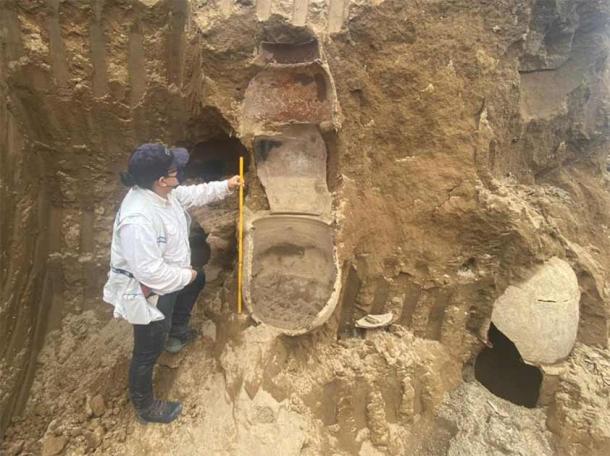
Experts from the INPC were called in to study the site. (Instituto Nacional de Patrimonio Cultural )
Identifying the Culture Behind the Funerary Urns
The INPC reports that the site is a cemetery with multiple, double, triple, and chimney urns made of ceramic. These vessels contain what they believe to be human remains from the Milagro culture.
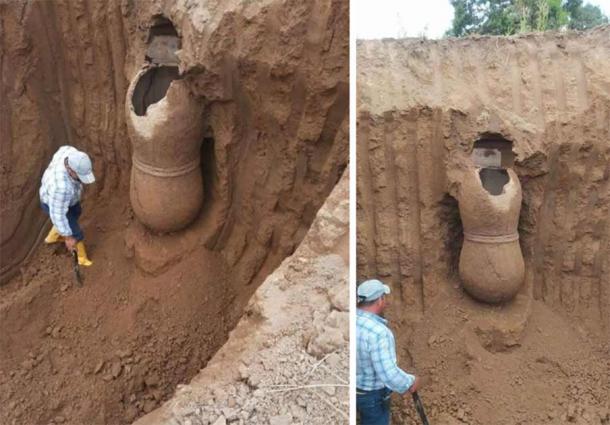
Impressive funerary urns discovered in the mound. ( YGV Prensa Digital )
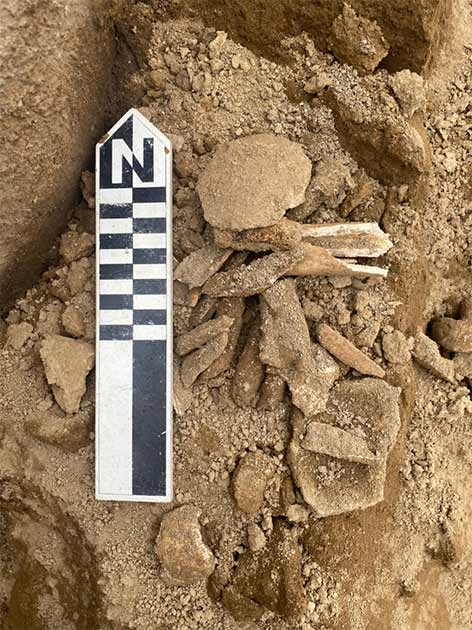
Bones were discovered inside the ceramic vessels. (Instituto Nacional de Patrimonio Cultural )
The Milagro culture, also known as Milagro-Quevedo, existed from approximately 900-1534 AD. The Milagro people occupied a large area between the western foothills of the Andean mountains and the Ecuadorian coast. Along with the Atacames, Jama II, and Manteño-Huancavilca cultures, Milagro was one of the last cultures to live in the region before the Spanish conquest and colonization.
When the Spanish arrived they called the Milagro people Chonos and colonial documents note that this culture traded with people living on the coast and in the southern highlands region, specifically the Cañari culture. Their privileged geographical location enabled them to trade items such as coca leaf, spondylus, cotton, obsidian, gold, copper, and bronze objects.
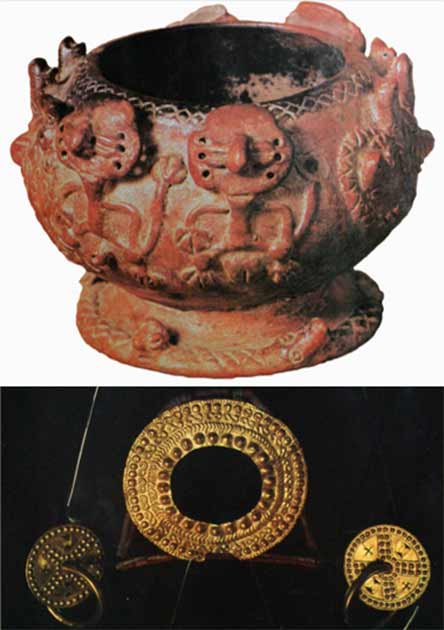
Ceramic and gold artifacts made by the Milagro-Quevedo culture. ( Diego Balarezo Pinos )
Apart from Milagro ceramics, which often depicted snakes, owls, frogs, and other amphibians, archaeologists also have linked this culture with a large number of tolas (mounds) across the region. Often these tolas are found in groups – which means there may be another one waiting to be discovered near the funerary mound recently found in Los Ríos.
Archaeologists have also found that the Milagro people generally placed their deceased in funerary urns in the fetal position and buried them with some personal belongings, however it is unknown if any other artifacts have been discovered in the urns (other than bones) at the cemetery that was unearthed this week.
What’s Next for the Milagro Cemetery?
The mayor’s office in Vinces states that “Several ancient cemeteries have been found in the canton and the archaeological remains should be preserved. This discovery provides more evidence for the ancient cultures that once lived on our land.”
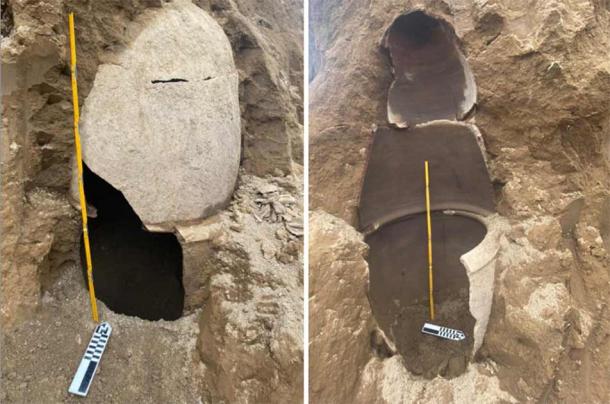
Experts believe the site served as a funerary mound for the Milagro culture which existed in the region from 900-1534 AD. ( Instituto Nacional de Patrimonio Cultural )
El Universo reports that the INPC has taken measures to continue their studies of the ancient cemetery and to protect the site. They have cordoned off the site to prevent curious onlookers (and people with less innocent motives) from entering the site, they have stopped all construction work until they complete their analysis, and they plan to remove the funerary urns and remains found at the hacienda once they’ve finished their on-site analysis.
Top Image: Large ceramic funerary urns discovered within a mound found in the Los Ríos province of Ecuador. Source: Instituto Nacional de Patrimonio Cultural /YGV Prensa Digital
By Alicia McDermott
 RSS Feed
RSS Feed













 August 20th, 2021
August 20th, 2021  Awake Goy
Awake Goy  Posted in
Posted in  Tags:
Tags: 
















